Nebraska and Iowa’s Bob Kerrey Pedestrian Bridge
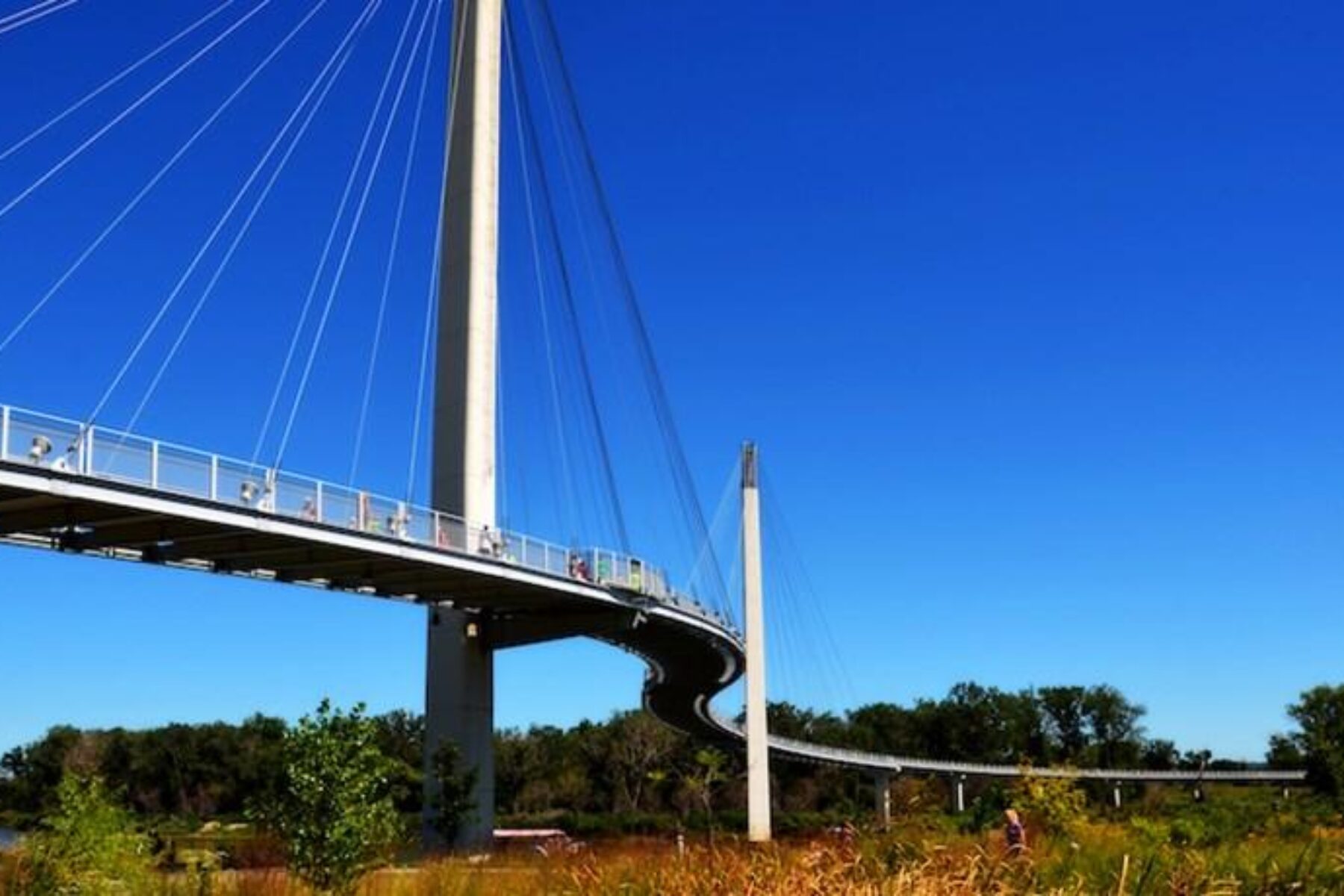
Trail of the Month: March 2020
Floating sinuously over America’s longest waterway, the Bob Kerrey Pedestrian Bridge straddles the Missouri River between bustling Omaha—Nebraska’s largest city—and the quieter-feeling hometown of Council Bluffs, Iowa. The graceful structure, once hotly debated, played a transformational role in the riverfront’s redevelopment and continues to serve as a catalyst for upcoming projects.
“Even after the bridge was built, people said it was a bridge to nowhere. What’s fascinating now is people understand that the bridge is the somewhere.”
—Deborah Ward, vice president of marketing and communications for Visit Omaha
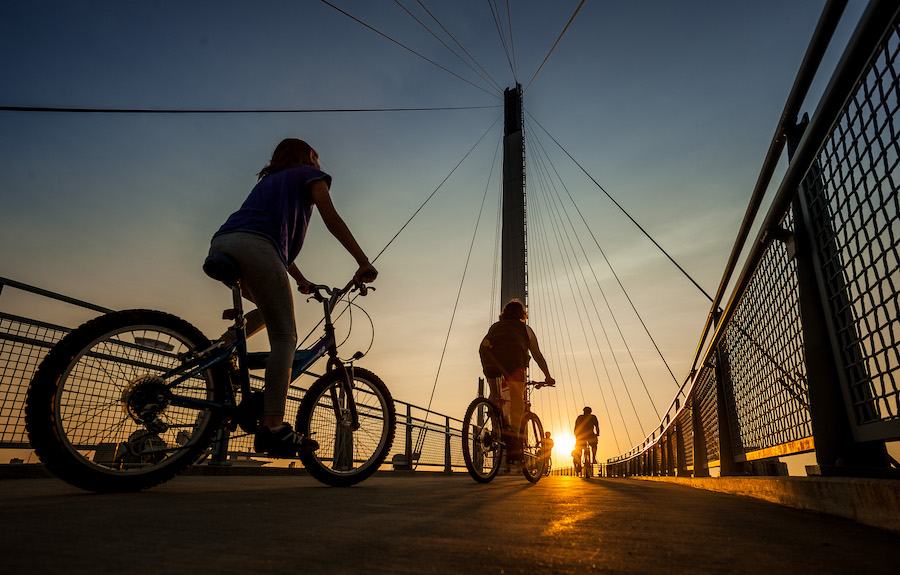
“There were people who said it was a waste of money,” said Deborah Ward, vice president of marketing and communications for Visit Omaha. “Even after the bridge was built, people said it was a bridge to nowhere. What’s fascinating now is people understand that the bridge is the somewhere. People just flock there—it’s a destination.”
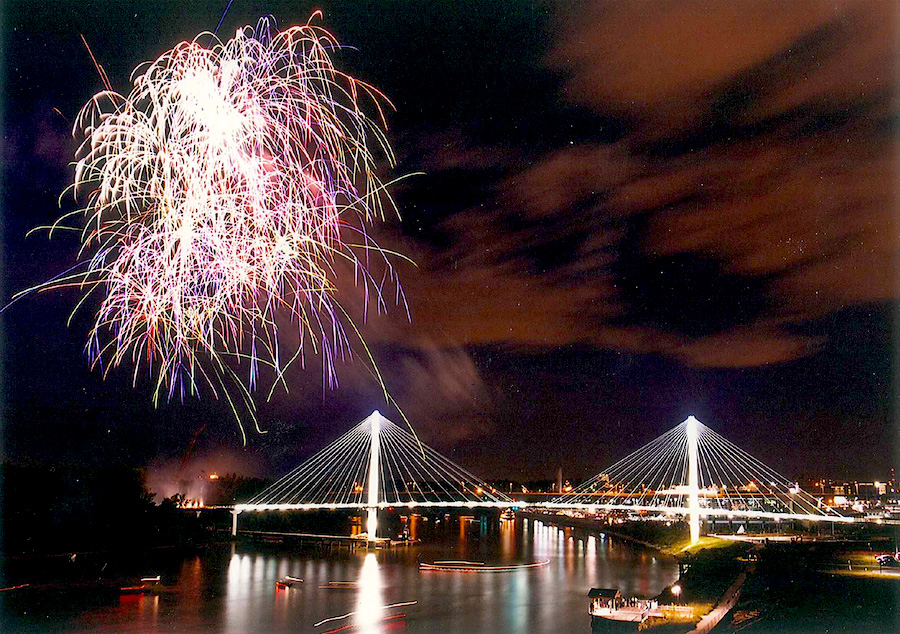
Although born in controversy, the bridge has become an iconic symbol of its home cities and is affectionately called Bob by locals. Like any modern celebrity, the bridge even has its own Instagram page and Twitter feed (@BobTBridge for both), as well as its own catchphrase; visitors can go “bobbing” by standing astride the state line at the midpoint of its 3,000-foot expanse.
“It’s a cable-stayed bridge, so it seems like it’s suspended in the air like magic,” said Ward. “And you can feel it swaying sometimes. It’s one of those experiences where you look at your friend and say, ‘Did you feel that?’”
Not only a beloved local star, the Bob Kerrey Bridge is also making its national debut with an exciting new role in the Great American Rail-Trail®, a 3,700-mile route across the county. By providing the connecting point between Iowa and Nebraska, this growing national trail can continue its journey between Washington, D.C., and Washington State.
Banking on the River Bank
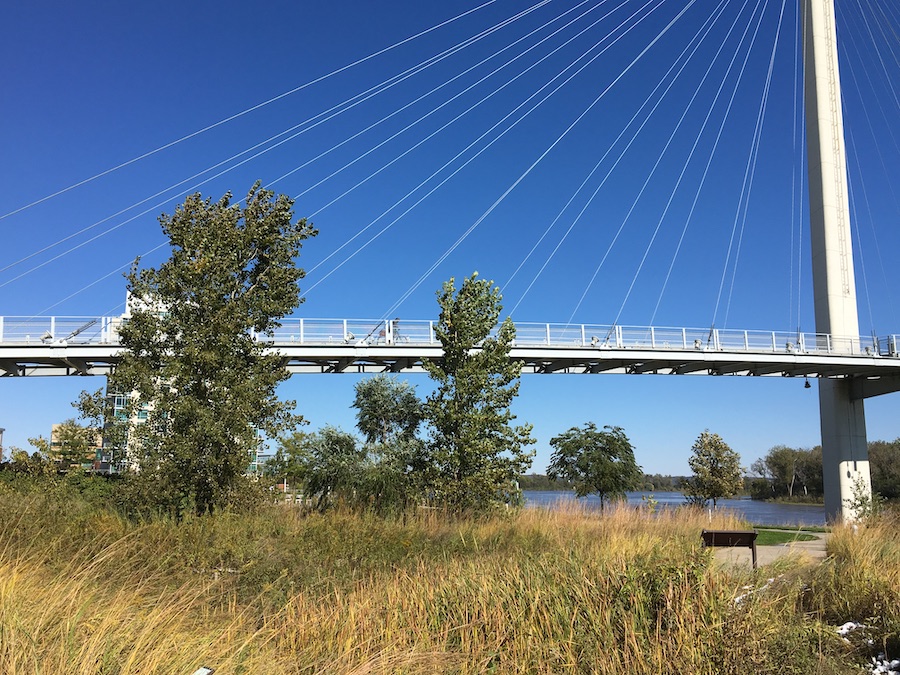
The bridge’s distinctive curve is symbolic of the Missouri River 60 feet below. From this vantage point, visitors can take in spectacular views of the city skyline to the west and the greenery of the park to the east. Today, it’s hard to imagine that this idyllic setting was once an area of severe environmental damage.
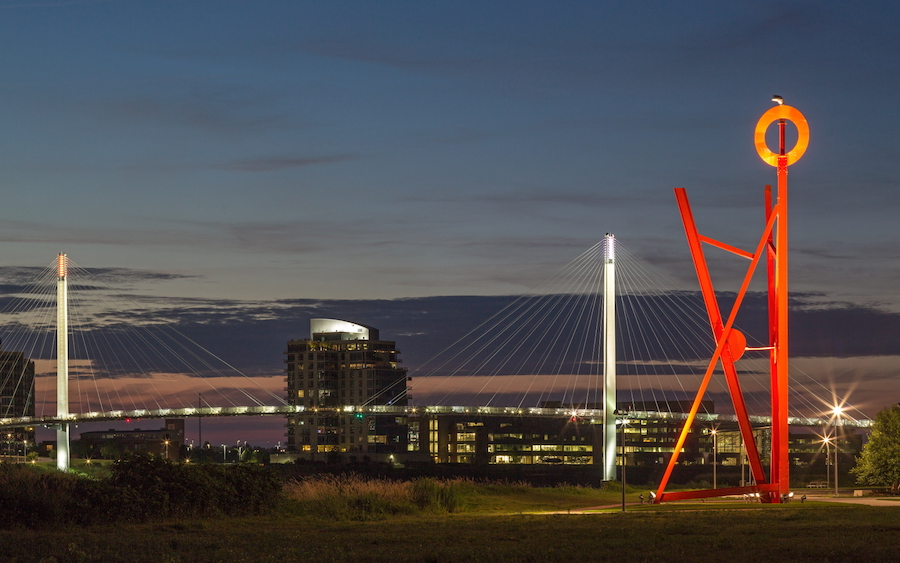
“The riverfront on the Omaha side was a heavy metal smelting location, and those operations meant that a large portion of eastern Omaha became a Superfund site, so a lot of land down by the river has been not accessible for a very long time,” explained Eric Williams, a natural resources planner with the Papio-Missouri River Natural Resources District. “The bridge was a way for people to reengage with the river.”
A committee was formed in 1994, including representatives from both cities, to find a better way to utilize the river. The team considered creating a tram to go across it, or providing a water taxi service with stops along both riversides, but those ideas were non-starters as trams and water taxis would be difficult to run year-round with the typically snow-and-ice-laden midwestern winters. At the time, both Omaha and Council Bluffs had burgeoning trail systems, but you couldn’t get from one to the other without a car, so the concept of building a pedestrian bridge grew legs.
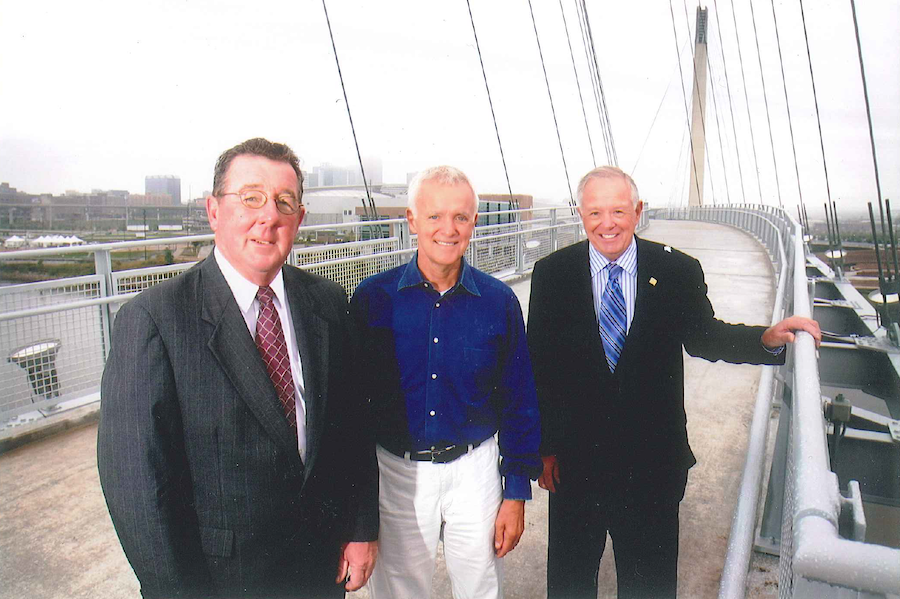
Former Nebraska governor and U.S. Senator Bob Kerrey, for whom the bridge is named, was instrumental in obtaining a $19 million federal earmark for its construction. Additional funding came from sources like the Papio-Missouri River Natural Resources District and the Iowa West Foundation. The work began in 2006, and the bridge opened two years later with fireworks.
“There had been a big fear that the river was dangerous and you shouldn’t go near it,” said Tom Hanafan, interim president of the Council Bluffs Area Chamber of Commerce. “Now, we’ve done exactly the opposite, saying the river is an important part of our metropolitan area, and you should be there to see the river because it’s an asset.”
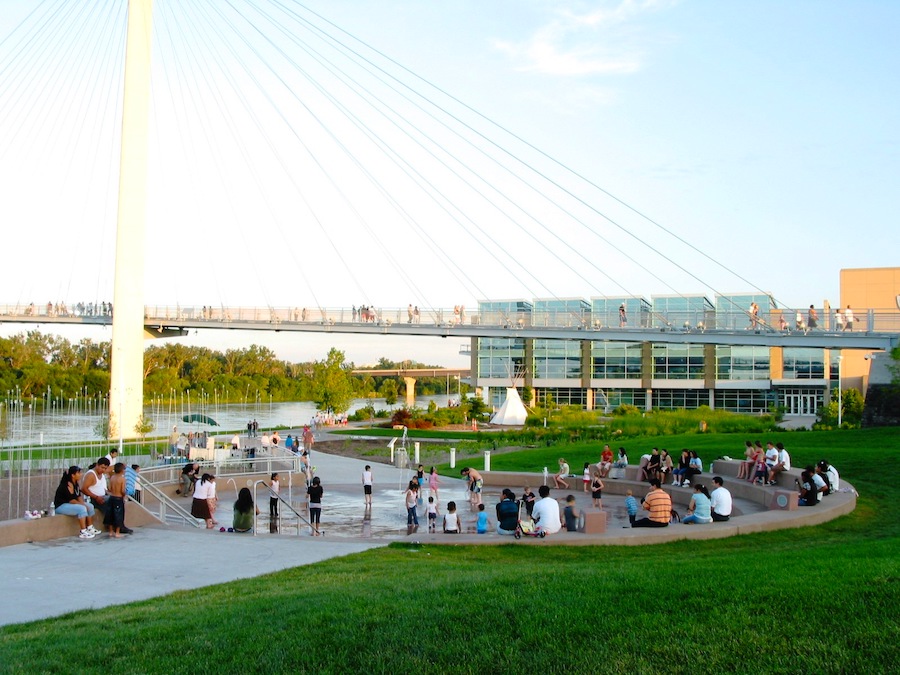
In Iowa, the bridge touches down in Tom Hanafan River’s Edge Park, the centerpiece of which is a gathering place—and perfect picnic spot—called the Great Lawn. Everything here is designed to work efficiently with the natural environment rather than against it. Filled largely with natural grasses, its design is purposefully simple to aid in its resilience to flooding. The park honors Hanafan, who was the longest-serving mayor of Council Bluffs and part of the original bridge committee. At the naming ceremony, he was acknowledged for his work as “an individual who returned us back to the river.” Hanafan remembers the event as the surprise of his life.
“My mother was sitting there—and she was in her 90s—and she knew about it, but she wouldn’t tell me,” chuckled Hanafan about the unexpected announcement. “I only lived about eight blocks away. We grew up there, and my mom would always say in the morning ‘now don’t go near the river’ because that was a no-no. So she laughs and says, ‘Now your name’s on it, so I can’t tell you not to go near the river!’ When she passed away, we put a bench down there with her name on it, right next to the river.”
Big Connections: Two Cities, Two States and a Whole Lot of Trails

Spiraling outward from either side of the bridge are growing trail systems in both Omaha and Council Bluffs, as well as park space and many recreational amenities. In tandem with these efforts, access to bicycles is also expanding with Heartland B-Cycle, a bike-share program that launched in 2011 and now has 72 stations throughout both cities.
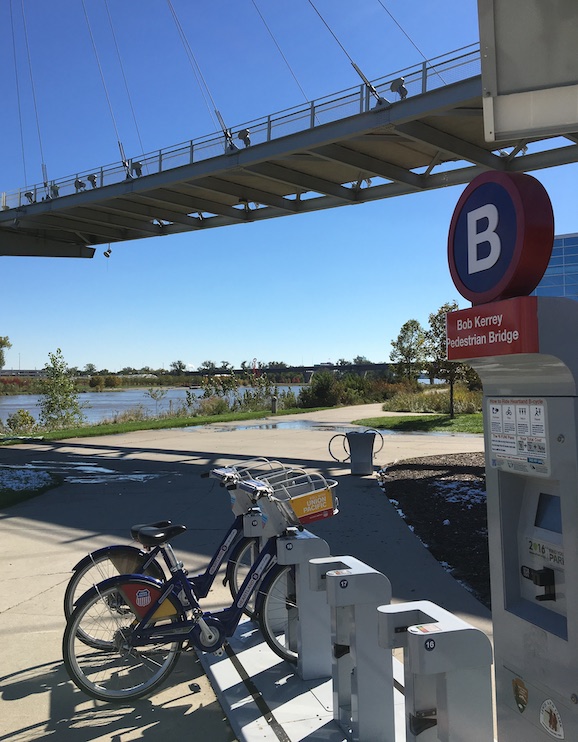
“What’s really exciting is what’s coming in the next two to four years: a $300 million riverfront project that will extend from the middle of downtown Omaha all the way down to the Missouri River and then along the riverbank to Bob,” enthused Ward about the 90-acre redevelopment plan. “There’s talk of adding a performance pavilion, a botanical garden, waterfalls and a cantilevered overlook of the river.”
Although the Bob Kerrey Bridge is not a rail-trail conversion, the area is steeped in railroad heritage going back more than 150 years to the transcontinental railroad with some of the old rail corridors evolving into places for people-powered transportation. Just a few miles from either riverbank, history buffs can learn more about this fascinating legacy at two museums: Council Bluff’s Union Pacific Railroad Museum, which includes a collection of Abraham Lincoln artifacts, and Omaha’s Durham Museum, housed in a beautiful art deco train station that’s a designated National Historic Landmark.
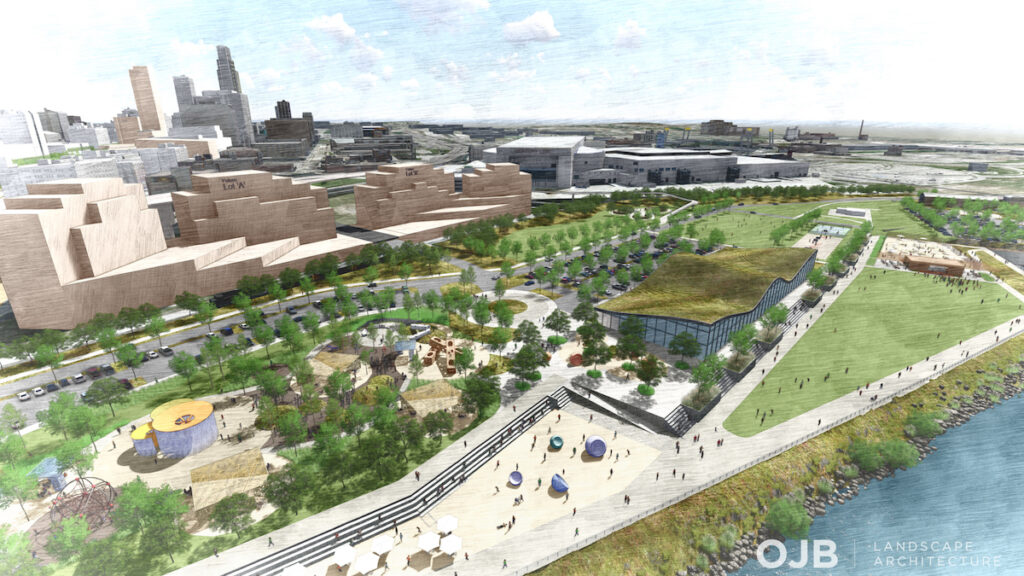
“Abraham Lincoln set mile zero of the transcontinental railroad in Council Bluffs, so this is a railroad town,” said Matthew Henkes, vice president of grants and initiatives for the Iowa West Foundation. “It used to be kind of a rough-and-tumble town on the frontier. There’s also the Oregon Trail, the California Trail, the Mormon Trail and the Lewis and Clark Trail, all of which cross here. This is the hub of so many exciting historic trails, while it also has a nice trail system for modern recreation.”
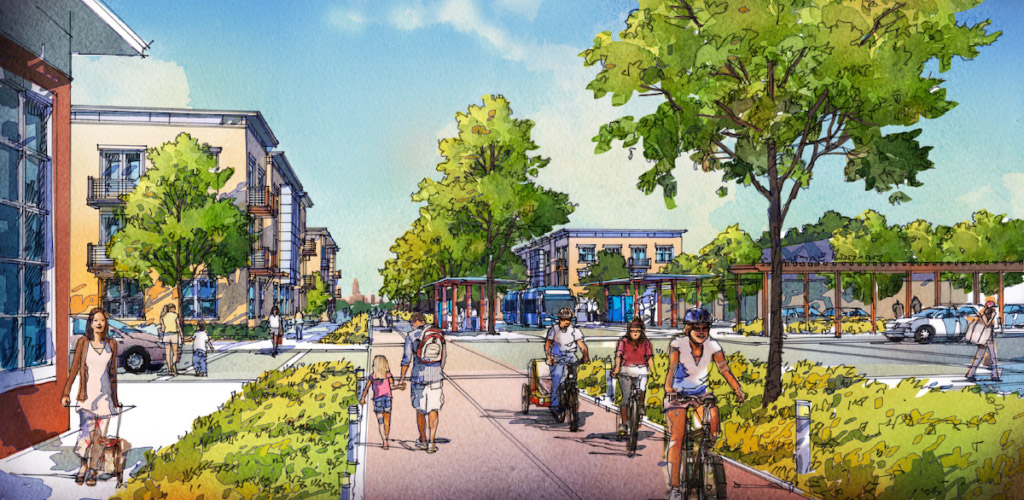
On the Nebraska side, a project slated to begin construction this year and officially named the North Downtown Riverfront Pedestrian Connector Bridge—but better known as the “Baby Bob”—will connect the Bob Kerrey Bridge with downtown Omaha, the convention center and TD Ameritrade Park Omaha, the baseball stadium that hosts the College World Series. For a structure only a tenth of a mile long, the new extension will have a big impact, allowing travelers on foot to safely circumvent Riverfront Drive and active railroad tracks.
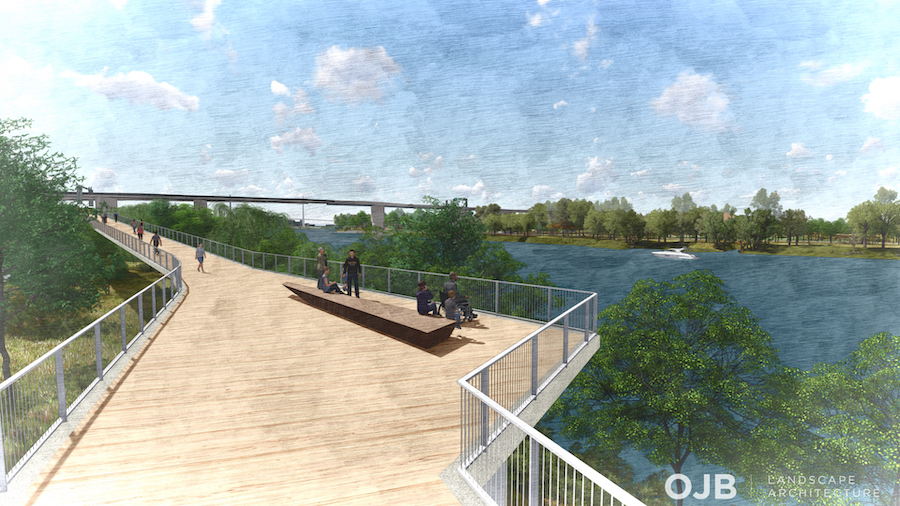
“The Bob Kerrey Bridge was a huge piece, the kind of thing that’s a once-in-a-generation opportunity, and now the Baby Bob will continue on that work and allow even more access to that existing feature,” said Williams. “There are additional projects that will keep making those two pieces even better connections across the entire metro area.”
On the Iowa side, Council Bluffs offers more than 40 miles of trail, much of it built along the riverfront levees. A new project, the First Avenue Trail, which may start construction as early as this year, will begin near the riverfront park and travel the 2 miles east to downtown Council Bluffs, opening up a whole wealth of restaurants, attractions and retail options for trail users.
“We did a study—in partnership with the city and the county—on recreational needs, and the number one thing that people said was that they wanted more trail,” said Henkes. “And so we’ve been working with them to create a countywide loop in Pottawattamie County. There’s also a group in Mills County, which is to the south of us, that’s looking to connect the City of Bellevue, the Wabash Trace and the City of Glenwood. What that would do is create a couple cloverleaf loops that meet in Council Bluffs so that you have this hub of trail activity that allows you to go a long distance or a short distance, and experience urban trails or get to rural trails pretty quickly.”
With all of these trail connections, it’s possible to ride a nearly continuous off-road route connecting three states—Nebraska, Iowa and Missouri—with a large swath of the route along the Wabash Trace Nature Trail, a scenic 63-mile Hall of Fame Rail-Trail.
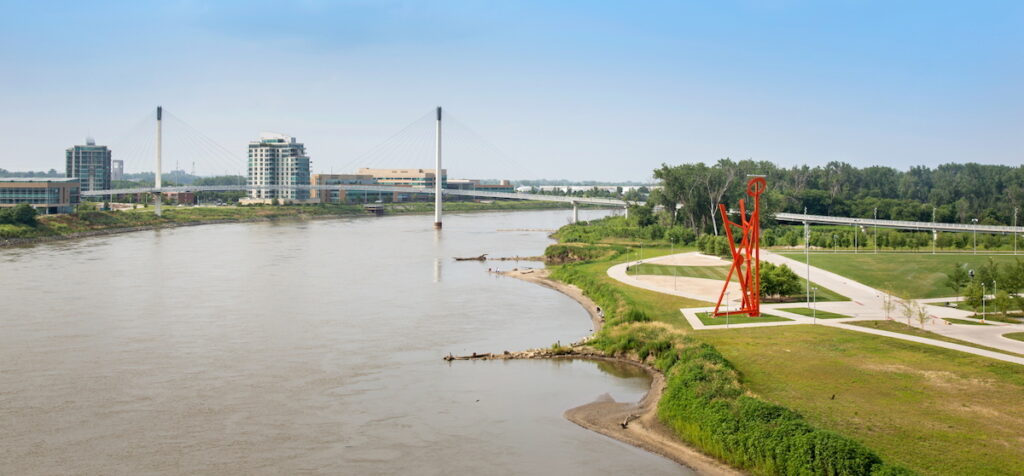
Linking cities, linking states, linking the country: For a bridge just a smidgen over half a mile, it does quite a lot.
“Any contentious issues went away once it was built. Now it’s a landmark,” said Hanafan. “It’s like every postcard of Omaha has the Bob Kerrey Bridge on it.”
Related: Iowa’s Wabash Trace Nature Trail

Donate
Everyone deserves access to safe ways to walk, bike, and be active outdoors.
